Celebration of Excellence Day
Hastings College is celebrating excellence with Academic Showcase and the Honors Convocation!
On Wednesday, April 30, 2025, classes are cancelled for the day so the entire campus community can participate.
Academic Showcase
Each spring, members of Alpha Chi, the collegiate all-discipline national honor society, coordinate Academic Showcase.
During Academic Showcase, students, faculty, staff, parents and community members enjoy and learn from fascinating student presentations about individual research projects, experiential learning, study abroad experiences and creative endeavors.
Academic Showcase is a chance for students to share their passions and to show off their impressive work. It also gives students a chance to engage in dialogue and discussion as they answer questions about their project.
Honors Convocation
Honors Convocation is at 3:30 p.m. in French Memorial Chapel.
The event will be livestreamed on our YouTube channel.
2025 Academic Showcase Schedule
The abstract book is available here.
9:00-9:20 a.m.
Morrison-Reeves 219
Single-Laser System for Simultaneous Locking to Cooling and Repump Transitions in Rb-87
By Millyzient McClure
Morrison-Reeves 148
Happy Hands: The Role of Iconic Hand Gestures in Recall of Happy Memories
By Lilac Ramsey
Morrison-Reeves 213
-No Presentation-
Morrison-Reeves 131
Growing the Game: An Investigation of Motivators and Deterrents to Golf Participation
By Jaydon Rogers
9:30-9:50 a.m.
Morrison-Reeves 219
Recruitment and Retention of Healthcare Providers in Nebraska: Insights from Medicine, Pharmacy, and Dentistry
By Myah Brown, Jenna Sterling and Catie Reed
Morrison-Reeves 148
The Silent Whistle: Gender Bias in Referee Interactions with Soccer Coaches
By Megan Lampe
Morrison-Reeves 213
Toric Knot Mosaics
By Kaelyn Pontes
Morrison-Reeves 131
A Wonderful Ride: Billy Graham’s Utilization of Western Musical Cinema in 1950s America
By Emma Morelli
10:00-10:20 a.m.
Morrison-Reeves 219
Understanding and Addressing Depression in Mothers: A Collaborative Approach with South Heartland District Health Department
By Lauren Schneider
Morrison-Reeves 148
Kate Barr Can’t Win – But Gerrymandering Won’t Either
By Bri Narick
Morrison-Reeves 213
Perceptions of the COVID-19 Pandemic Among Individuals with Parkinson’s Disease
By María Andrea García Elizondo
Morrison-Reeves 131
From Passion to Violence: Understanding Ultra Groups in Spanish Soccer Through Ultras Sur and Frente Atlético
By Mireia del Val Fernandez
10:30-10:50 a.m.
Morrison-Reeves 219
The Impact of High-Protein Breakfast on Food Cravings and Food Cue Reactivity: A Randomized Crossover Design
By Riley Lanning
Morrison-Reeves 148
Chasing Dragons: Victorian Tourism, National Identity, and Dragons.
By Anya Myers
Morrison-Reeves 213
Emotions and Efficiency: A Utopian Society Allows Both
By Caspian Weeden
Morrison-Reeves 131
From Whistle to Words: Understanding the Impact of Coach Feedback on Female Athlete Satisfaction
By Cecilia Velarde
11:00–11:20 a.m.
Creative Thoughts in Action
Morrison-Reeves 219
Pigs: A Duet for Clarinet and Piano
By Donovan Andrews & Dylan Shaw
Morrison-Reeves 148
Theatrical Resistance: Queer Performance as an Arena of Resilience
By Bri Narick
Morrison-Reeves 213
The History and Future of the International Gay Rodeo Association (IGRA)
By Lilac Ramsey
Morrion-Reeves 131
Beyond the Classroom: The Creation of a Major at Hastings College
By Josephine Parker
11:30 a.m.–1:50 p.m.
Poster Session
Morrison-Reeves Science Center Atrium
The impact of cosmetic makeup use towards hiring decision bias — Abby Harveson
Impact of Ionic Liquids on DNA Melting Points — Lauren Stull
Do Concentration Grids Affect Focus and Attention? — Kiernan Paulk & Olivia Kugler
Effects on Fatigue While Using an Elevation Training Mask During Acute Exercise — Jaden Jurgensmier & Alec Fichter
A Study of How Insect Activity, Climate, and Body Condition Affect Decomposition — Tori Vondra
The Effect of Decayed Animal Matter on Plant Growth and Development — Isaiah Strachan
The Role of Sensory Perception in Animal Behavior — Nick Smeltzer
The Potential Roles of exRNA in Disease Pathogenesis: Potential Application for Biomarker Discovery and Therapeutic Application — Alyssa Baker
Cystic Fibrosis — Kaitlin Thiebauth
Multiple Sclerosis — Madison Carpenter
Bacterial Toxins in Infectious Diseases — Lewis Albert
Drug Delivery and Technology: CRISPR and Nanotechnology Integration to Target Genetically-Based Cancers — Myah Brown
Living with Cerebral Palsy — Araceli Ceja
The Impact of Ionic Liquids on DNA Thermal Stability — Grace Henry
The Impacts of Warm-Up Intensities on Physical Performance — Riley Clavel & Angelina Lockhart
Effects of Virtual Reality Baseball Training on Hitting Performance — Josh Hendrickson & Coletin Renn
The Effects of Beetroot Juice on Soccer Players — Elizabeth Billings & Allison Seery
The Rise, Fall, and Resurgence of Syphilis — Jackson Lake
Estimating Surface Area of Irregular Objects Through Conductivity Measurements — Kerisha Darling
The Feedback Factor: The Impact of Positive and Negative Feedback on Female Performance — Grace Branson
Dimensions of Food Cravings Across the Menstrual Cycle: A Mixed-Methods Pilot Study — Riley Lanning
Climate Change Impact on West Nile Virus — Christian Wiegert
Olive Ridley Sea Turtles Defying Climate Change as Intermediate Breeders — Morgan Krinke
The Correlation Between Water Levels and Biodiversity Within Urban Wetlands: A Longitudinal Study — Gavin Chohon
Heat and Ice: Comparing the Effects of Each on Recovery after Strenuous Resistance Exercise — Júlia Vilanova Bonvehí & Dalton Michael
Synthesis of NH-Sulfoximines from Sulfides — Isabel Tanabe
A Continuing Analysis of Hastings College River Water — Rennick Turner
Climate Change and The Effects on Migrant Species — Abigail Beeck
Understanding the Complex Condition of Eczema — Lauren Schneider
The Impact of Intermittent Fasting on Muscle Force Production and Endurance — Reid Martinez & Jackson Hansen
What Becomes of Me: A Scientist’s Spiritual Exploration of the Death and the Afterlife — Marissa Ruiz
Closing The Deal: An Investigation of Persuasive Strategies Used by Realtors — Jayden Lawrence
How Invasive Species can be Beneficial — Bre Jonaitis
The Effects of Cluster Sets on Force and Speed Production — Torrington Ford & Gunnar Ogle
Hyperthyroidism — Sophia Summy
A Coaching “Slam Dunk”: An Investigation of the Communication that College Coaches use to Recruit Athletes — Fernando Perez
Connection of Neuropathic Ways in Upper-Limb Prosthetics — Jackson Pedersen
The Role of Gut Microbiota in Alzheimer’s Disease — Kaila Botts
Accents at Work: An Examination of the Effects of Linguistic Profiling on Potential Employment — Rory Vince
Effects of Xenobiotics on Ecosystems: Impacts on Environmental and Human Microbiomes — Alissa Bailey
Isopod Interaction With Pea Plant Growth — Anya Myers
Effect of Xenoestrogens on the Syngnathidae Family — Jesse Chartier
The Power of Words: Exploring Perceptions of Athletes in Images With and Without Captions — Alyssa Currie
Assessing the Use of Intersectionality through the MeToo movement — Tymia Thompson
Understanding Epilepsy: An Overview, of Etiology, Epidemiology, and Pathophysiology — Michaela Fox
Rain Check for Doomsday: The Impact of Climate Change Media Messages on Future Orientation — Ember Thoreson
Evaluating the Dangers of Human Growth Hormone (HgH) Compared to Erythropoietin (EPO) and Androstenedione — Madison Henderson
The Impact of Media on Individuals’ Attention — Levi West
State Sponsored Support: The Influence of Media on Citizen Opinions in Authoritarian Democracies — Elizabeth Miller
Jessica Meeske: The Core of Compassion — Karen Navarrete Figueroa
2:00-2:20 p.m.
Morrison-Reeves 219
New Wave Of News: Investigating the Differences of Framing With User Generated Content Versus Legacy Media
By Kiefer Zabel
Morrison-Reeves 148
Made in Whose Image
By Maxwell Blankenship
Morrison-Reeves 213
“Individual Liberty, Free Institutions, and Genuine Independence”: How Economic Aid from the Marshall Plan Impacted the 1950 Turkish Election
By Elizabeth Miller
Morrison-Reeves 131
Athlete Perceptions of Coaching Behaviors and the Coach-Athlete Relationships: Influences on Athlete Motivation
By Shania Santos
2:30-2:50 p.m.
Morrison-Reeves 219
The Abyss Project pt.1: An Analysis of Emptiness and the Self
By Karl Ludwig
Morrison-Reeves 148
Gender on the Menu: Analyzing Gender Dynamics in Communication Between Servers and Customers
By Alec Garcia
Morrison-Reeves 213
But What About Women? A Critical Analysis of Alfonso Cuaron’s Film Adaptation of Children of Men
By Kailani Smile
Morrison-Reeves 131
Resilience, Community, and Nationalism in Russian Gaming
By June Houlihan

